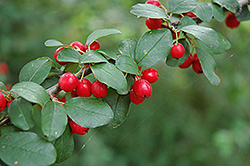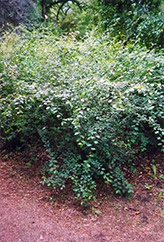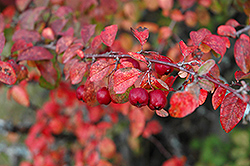It's all about ...
plants

European Cotoneaster
Cotoneaster integerrimus
Height: 10 feet
Spread: 12 feet
Sunlight:
![]()
![]()
Hardiness Zone: 2b
Description:
A large spreading shrub valued primarily for its showy cherry red fruit in fall and into early winter; white flowers in spring, a somewhat loosely arching habit of growth; can be grown in masses or as a solitary with adequate room
Ornamental Features
European Cotoneaster is primarily valued in the landscape or garden for its cascading habit of growth. It has clusters of pink flowers along the branches in mid spring. It has dark green deciduous foliage. The oval leaves turn an outstanding brick red in the fall.
Landscape Attributes
European Cotoneaster is a multi-stemmed deciduous shrub with a shapely form and gracefully arching branches. Its relatively fine texture sets it apart from other landscape plants with less refined foliage.
This is a relatively low maintenance shrub, and is best pruned in late winter once the threat of extreme cold has passed. Gardeners should be aware of the following characteristic(s) that may warrant special consideration;
- Disease
European Cotoneaster is recommended for the following landscape applications;
- Mass Planting
- Hedges/Screening
- General Garden Use
Planting & Growing
European Cotoneaster will grow to be about 10 feet tall at maturity, with a spread of 12 feet. It tends to fill out right to the ground and therefore doesn't necessarily require facer plants in front, and is suitable for planting under power lines. It grows at a medium rate, and under ideal conditions can be expected to live for approximately 30 years.
This shrub does best in full sun to partial shade. It is very adaptable to both dry and moist growing conditions, but will not tolerate any standing water. It is not particular as to soil type or pH, and is able to handle environmental salt. It is highly tolerant of urban pollution and will even thrive in inner city environments. This species is not originally from North America.


